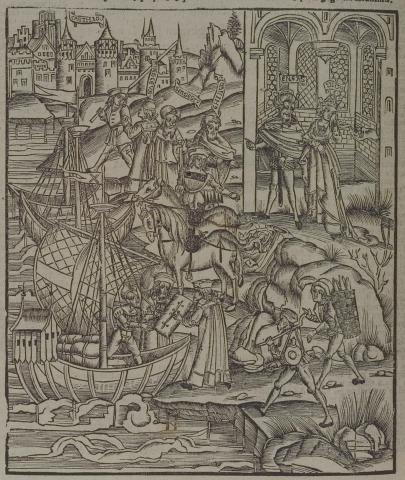Annotations
In the upper left, Mnestheus, Sergestus and Cloanthus direct the preparation of Aeneas's ships for departure (287-91). In the lower half of the image, members of Aeneas's crew load arms and provisions onto ships. In the upper right, Dido berates Aeneas, who attempts to defend his actions and explain why he must leave (305-87). Dido holds to her face a piece of fabric, either part of her veil or a handkerchief, an indication that she is emotional. In Vergil's portrayal of Dido, she is much more upset than Brant portrays. (Katy Purington)
Woodcut illustration from the “Strasbourg Vergil,” edited by Sebastian Brant: Publii Virgilii Maronis Opera cum quinque vulgatis commentariis expolitissimisque figuris atque imaginibus nuper per Sebastianum Brant superadditis (Strasbourg: Johannis Grieninger, 1502), fol. 218v, executed by an anonymous engraver under the direction of Brant.


Sebastian Brant (1458-1521) was a humanist scholar of many competencies. Trained in classics and law at the University of Basel, Brant later lectured in jurisprudence there and practiced law in his native city of Strasbourg. While his satirical poem Das Narrenschiff won him considerable standing as a writer, his role in the transmission of Virgil to the Renaissance was at least as important. In 1502 he and Strasbourg printer Johannes Grüninger produced a major edition of Virgil’s works, along with Donatus’ Life and the commentaries of Servius, Landino, and Calderini, with more than two hundred woodcut illustrations. (Annabel Patterson)